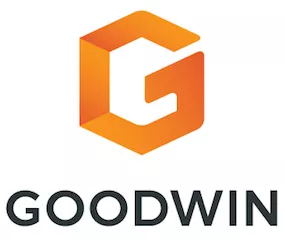- within Food, Drugs, Healthcare and Life Sciences topic(s)
- within Transport topic(s)
Prescription Drug Affordability Boards (PDABs) are becoming a larger part of the state drug price regulatory landscape.1 The boards are regulatory bodies that review the affordability and cost of specific prescription drugs. Maryland created the first PDAB in 2019. As of April 2025, 12 states had enacted some form of a PDAB and at least 11 additional states have introduced or considered legislation to create them.
PDABs have grown in popularity as states have expanded their interest and authority in monitoring drug prices via transparency laws. However, as states settle into implementing and applying their transparency laws, it has become clear that some are now using data submitted by manufacturers to further scrutinize manufacturer pricing. Most notably, several states have turned to harnessing reported data to implement upper payment limits (UPLs) or supplemental rebates for their Medicaid programs via their PDABs. Other states have opted for a softer touch when implanting their PDABs, simply creating authority for affordability reviews. Still, if states feel their price transparency laws are not having their intended effects, they may turn to more sweeping models for addressing drug pricing, including creating their own PDABs or expand existing PDAB authority.
With PDABs playing an increasing role in drug price transparency, we've provided a view of the current PDAB landscape in this alert.
Introduction to PDABs
PDABs are becoming a more common component of the drug price transparency landscape. PDABs conduct affordability reviews and make recommendations to state legislatures regarding spending on prescription drugs. Those recommendations often include legislative or regulatory suggestions to address drug affordability for the state's health system and consumers in the state.
PDAB authority varies from state to state, although they can generally be broken down into three categories:
- Authority to set UPLs (CO, MD, MN, OR, WA)
- Authority to negotiate supplemental rebates to limit pharmacy benefit spend growth (MA, NY)
- Authority limited to studying affordability and making legislative and policy recommendations (ME, OH, NH, NJ, VT)
There is already some degree of variability in terms of how active state PDABs are in practice. At this time, the states that are expected to be the most active using their PDABs for drug price transparency and affordability enforcement are Colorado, Minnesota, Oregon, and Washington. Meanwhile, states such as New Jersey and Ohio have PDABs that can currently be considered dormant.2
UPLs
UPLs are currently the strongest form of PDAB authority. A UPL is a cap on the maximum amount that purchasers or payers can pay for a healthcare service or product, including a prescription drug. The UPL is a tool to put downward pressure on prices without imposing direct price controls. Although five states currently authorize the imposition of a UPL, only Colorado is ready to fully implement it. Colorado will begin its Enbrel UPL rulemaking in May 2025 and will name three drugs subject to the UPL in the near term.
There are different UPL approaches that a state may adopt, including a combination of these methodologies, each of which have benefits and drawbacks:3
- Percentage off Wholesale Acquisition Cost (WAC): UPL set as fixed percentage discount off a drug's WAC
- Net cost: UPL established in accordance with the existing average net price of the drug after rebates or discounts negotiated between the drug manufacturer and PBM
- Reference pricing to existing benchmarks: UPL established using prices previously negotiated by other entities
- Reference pricing to therapeutic alternatives: UPL based on the prices of comparable standard of care drugs or adequate substitutes
- Launch price indexing: UPL benchmarked at product launch price and increases beyond the benchmark indexed yearly according to inflation/CPI
- Value pricing: UPL determined by assessing the economic value of the covered drugs
- Budget-impact-based: UPL designed to control or mitigate a drug's impact on budgets and pharmacy spending
Recent PDAB Legislative Activity
- Vermont: S.98 directs the state's Green Mountain Care Board (GMCB) to create a framework and methodology for implementing a program to regulate the cost of prescription drugs. The board, previously established in 2011 to review general health system costs, was directed to study options and impacts of a drug affordability program, effectively attaining PDAB authority similar to those of other states. Under S.98, the GMCB is required to provide its final plan for implementing a prescription drug regulatory program to the state legislature no later than Jan. 15, 2026. The board will study other state PDAB efforts and Centers for Medicare & Medicaid Services' Medicare Drug Price Negotiation Program (created by the 2022 Inflation Reduction Act), among other factors, to develop its policy and legislative action recommendations to limit price increases/drug spend.
- Virginia: In April 2024, Virginia's governor vetoed H.B. 570, which would have established a PDAB. The PDAB contemplated drug price criteria including launch prices, price increases, and other affordability challenges for brand-name, biosimilar, and generic drugs. Had a drug met the criteria, the board could have established a UPL. The board would have had the authority to establish a UPL if it found that a reviewed prescription drug had led or would lead to an affordability challenge for the state's healthcare system or for Virginians. The UPL would have applied to all purchases and payer reimbursements of the drug product dispensed or administered in the state.
- Michigan: In 2023, SB483 passed the Michigan Senate but failed to advance in the House. The bill would have created a PDAB with the authority to establish a UPL and would have allowed the state attorney general to pursue civil actions for violations of the UPL by manufacturers. The board would have used inflation, WAC launch prices ($60,000 and higher), and price increases for a 30-day supply of drug in determining affordability.
Overall, at least 11 states that have yet to create a PDAB have considered creating some form of one in the past five years. We will continue to monitor new or revised legislation to create PDABs or expand their authority as state legislative sessions open.
PDAB Litigation
PDAB laws have been the subject of litigation. Recently, in March 2025, Colorado secured a summary judgment in its favor in a federal lawsuit filed by Amgen challenging the state's UPL.4 There, the court found that Amgen lacked standing to sue because it was not subject to direct regulation under the law. In March 2024, Amgen sued the state's PDAB, challenging both its decision to enforce a UPL on the drug Enbrel and the general regulatory framework enabling it. In 2023, Colorado declared Enbrel, Stelara, and Cosentyx unaffordable after a PDAB review of five drugs. Amgen's lawsuit raised four constitutional challenges to the PDAB's decision, including violations of the Due Process Clause, Supremacy Clause, and the Dormant Commerce Clause, and on federal preemption grounds.
We will continue to monitor updates to this lawsuit and other litigation related to PDABs.
For a more in-depth analysis of drug price transparency laws, please see our publication "State Drug Transparency Laws: Considerations for Pharmaceutical Manufacturers" in Chapter 8 of the American Health Law Association's 2021 edition of Health Law Watch.
Footnotes
1. For the latest information on state drug transparency laws, please see our companion alert, "2025 State Drug Transparency Law Development Update."
2. Ohio's PDAB technically has the right to operate, but the state has not yet adequately funded the board.
3. Oregon Prescription Drug Affordability Board (PDAB) Upper Payment Limit, Report to Legislature, 21-24 2024.
4. Hailey Konnath, Colo. Beats Amgen's Drug Price Cap Challenge, For Now, LAW360 (Mar. 28, 2025)
The content of this article is intended to provide a general guide to the subject matter. Specialist advice should be sought about your specific circumstances.




